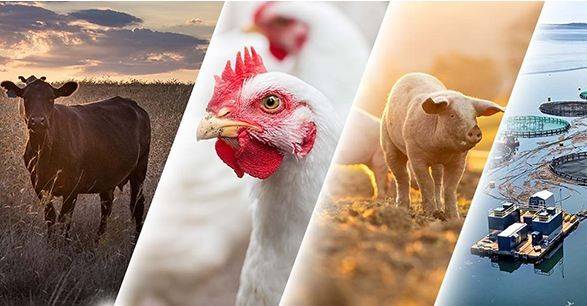Animal Protein Market Newsletter
Beef Market Insights
Higher U.S. Prices Push Beef Exports to Shrink; Domestic Demand Holding Steady
While beef exports are shrinking due to higher U.S. prices, domestic demand remains steady, and the quality of beef available to consumers has never been better. Inflation continues to impact food prices, with the 2024 Rabobank BBQ Index revealing a rise in the cost of a 10-person Fourth of July barbecue to $99 from $97 last year and $73 in 2018. Key contributors include beer, beef, soda, and lettuce. Lance Zimmerman, Rabobank’s senior analyst for Animal Protein, attributes the price increases in the beef category to factors at the herd and ranch level.
Argentina Introduces ‘Deforestation-Free’ Certified Beef Exports to EU
Argentina is enhancing its beef exports to the EU by introducing a certification scheme that guarantees its meat is deforestation-free. This initiative aims to comply with new EU regulations promoting sustainability. Argentina exports around 50,000 tonnes of beef to the EU annually, with the new certification ensuring traceability and compliance with EU Regulation 2023/1115. The first certified shipment to Germany demonstrates the effectiveness of the certification process, which uses blockchain technology for accuracy and reliability.
Weekly Cattle and Sheep Market Wrap
Slaughter Rates
- Lamb Slaughter: Record numbers processed, with 511,102 head.
- Cattle Slaughter: Highest since January 2020, at 142,390 head.
Market Performance
- Restocker Yearling Steer Prices: Fell below Feeder Steers for the first time since October 2023.
- Trade Lamb Indicator: Best performer, prices rose to 762¢/kg cwt.
- Mutton Indicator: Lowest performer, prices fell to 336¢/kg cwt.
Slaughter Data
For the week ending June 21, 2024, national cattle slaughter reached 142,390 head, the largest output since January 2020. Combined sheep and lamb slaughter reached 684,751 head, significantly above average weekly rates.
Pork Industry Update
China’s Possible Move Against EU Pork Imports Could Be a Mixed Blessing for Brazil
China’s potential imposition of anti-dumping measures on EU pork imports could significantly shift global trade dynamics, particularly benefiting Brazil. As one of the top three pork suppliers to China, Brazil stands to gain from increased Chinese demand. However, analysts caution that this potential boon comes with its own set of challenges, including intensified competition in other key markets such as the Philippines, Japan, South Korea, and the United Kingdom.
EU Pork Production Steady with Price Stability
Pork production in the EU has seen marginal gains in the first three months of the year compared to 2023, with total production at 5.42 million tonnes. EU pig meat exports have fallen by 6% year-to-date compared to 2023, primarily due to reduced exports to China and Japan. Recent ASF outbreaks in Germany continue to disrupt production.
U.S. Pork Industry Update
Last month, most hog and pork products in the supply chain sold at higher year-over-year prices. U.S. pork exports for 2024 have increased to 7.362 billion pounds, an 8% jump from the previous year, driven by strong shipments to Mexico, Japan, South Korea, and Australia.
Seafood Sector Insights
Private Equity Struggles in Seafood Industry
The private equity sector continues to struggle in the seafood industry, with notable failures and unwanted assets common. Despite evolving strategies, achieving profitability in the seafood sector remains challenging.
Rise of Ocean Freight Costs
The COVID-19 pandemic led to unprecedented rises in ocean shipping prices, affecting various seafood markets. The tilapia frozen fillet market from China faces significant turbulence due to ongoing supply challenges, rising freight rates, container shortages, and supply chain disruptions.
Innovative Use of Wind Farms for Seafood Production
In Denmark’s Baltic Sea, researchers are leveraging offshore wind farms for dual purposes: clean energy and seafood production. A project at the Kriegers Flak wind farm has shown early success with its first seaweed harvest. This initiative supports food production, improves water quality, and captures carbon emissions.
Dairy Industry News
US Health Agencies Launch New Studies on H5N1 Bird Flu in Dairy Workers and Products
US health agencies are conducting new tests on dairy workers and milk products to assess the impact of H5N1 bird flu. The CDC and FDA are studying if dairy workers exposed to infected cattle have contracted the virus and testing flash pasteurization’s effectiveness in neutralizing the virus in milk.
Raw Milk Sales Under Scrutiny Amid Bird Flu Outbreak
The FDA has requested some states to curb raw milk sales due to the spread of H5N1 among dairy cattle. Since March, over 120 herds across 12 states have tested positive, spreading the virus through raw milk.
Financial Woes Hit South African Dairy Farmers
In a major agricultural liquidation, South Africa’s Desmanda Milk and Dezmo Trans are being wound up, leaving over R90-million owed to 28 dairy farmers unrecoverable. The Milk Producers’ Association is calling for a forensic audit to understand the financial collapse.
USDA Enhances Aid for Dairy Producers Affected by Avian Flu
The USDA will open applications for the updated Emergency Assistance for Livestock, Honeybees, and Farm-raised Fish Program (ELAP) starting July 1. This program aims to support dairy producers facing milk production losses due to H5N1 infections.
Check out last weeks report: Weekly Animal Protein Market Report
